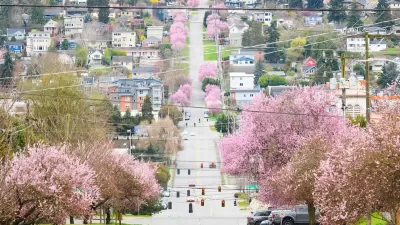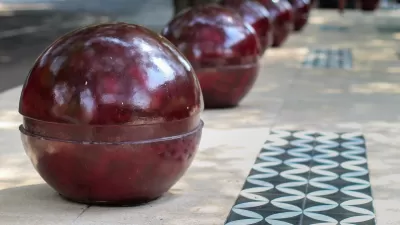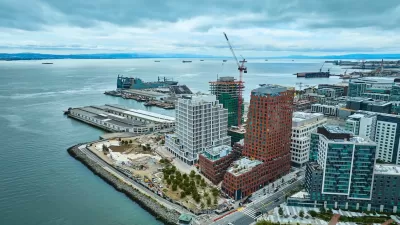Using a mishmash of highlights from cities around the world, musician and artist David Byrne talks about his personal vision of a perfect, livable city.
"A 'livable city' means vastly different things for many people. In Hong Kong it might mean that your family is in a comfortable apartment while you play in the exciting mercantile world in a glass tower overlooking the harbor. In Dallas livability might mean that you live near an expressway that isn't jammed up, at least not all the time, and your car runs most days. For some it might mean super fast Wi-Fi, the possibility of lucky and lucrative business opportunities and plenty of strip clubs. If that's what rocks your boat then try Houston, though to me that city, oil money made physically manifest, is my worst nightmare.
Here are some things that make a city livable for me:
Parking
To be honest, available parking doesn't matter to me. Parking lots and structures are dead real estate-they bring no life into a city and I'd be happy if there were a lot fewer of them in New York. It would be a pain in the neck for a lot of drivers, but unless they can be hidden underground, as they are often in Japan, lots and parking structures are simply dead zones, which hurt the businesses around them. In Japan parking structures are skinny, no wider than a large car, and a robotic system files the cars away. The Italian cities of Florence, Modena, Ferrara, where parking is pretty much relegated to the fringes of the town, are vibrant, though their appeal to pedestrians has turned some of them into tourist hubs."
FULL STORY: David Byrne's Perfect City

Americans May Be Stuck — But Why?
Americans are moving a lot less than they once did, and that is a problem. While Yoni Applebaum, in his highly-publicized article Stuck, gets the reasons badly wrong, it's still important to ask: why are we moving so much less than before?

Using Old Oil and Gas Wells for Green Energy Storage
Penn State researchers have found that repurposing abandoned oil and gas wells for geothermal-assisted compressed-air energy storage can boost efficiency, reduce environmental risks, and support clean energy and job transitions.

Placekeeping: Setting a New Precedent for City Planners
How a preservation-based approach to redevelopment and urban design can prevent displacement and honor legacy communities.

San Francisco’s Muni Ridership Grew in 2024
The system saw its highest ridership since before the Covid-19 pandemic, but faces a severe budget shortage in the coming year.

Colorado Lawmakers Move to Protect BRT Funding
In the face of potential federal funding cuts, CDOT leaders reasserted their commitment to planned bus rapid transit projects.

Safe Streets Funding in Jeopardy
The Trump administration is specifically targeting bike infrastructure and other road safety projects in its funding cuts.
Urban Design for Planners 1: Software Tools
This six-course series explores essential urban design concepts using open source software and equips planners with the tools they need to participate fully in the urban design process.
Planning for Universal Design
Learn the tools for implementing Universal Design in planning regulations.
Heyer Gruel & Associates PA
City of Moreno Valley
Institute for Housing and Urban Development Studies (IHS)
City of Grandview
Harvard GSD Executive Education
Salt Lake City
NYU Wagner Graduate School of Public Service
City of Cambridge, Maryland





























